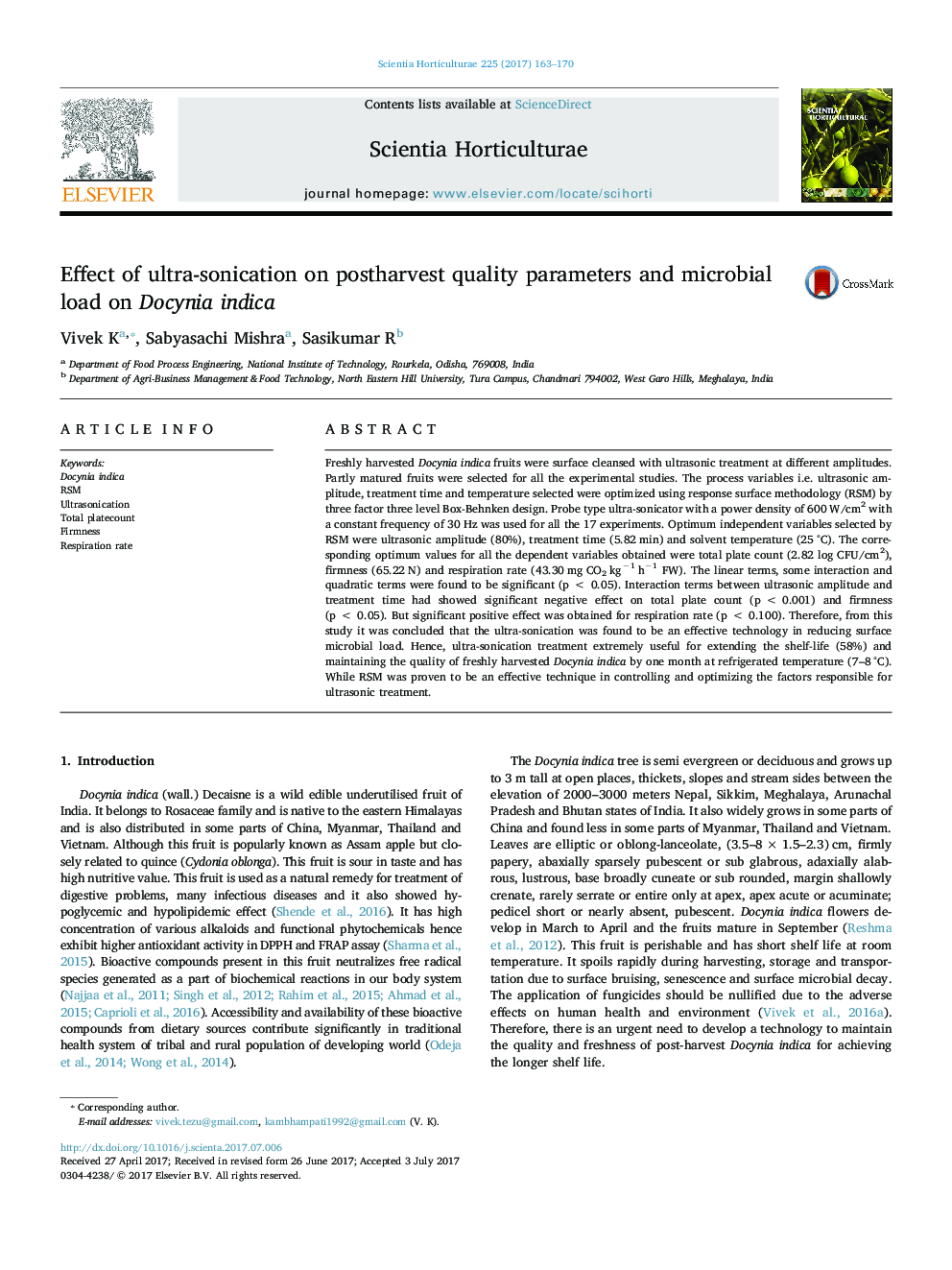| Article ID | Journal | Published Year | Pages | File Type |
|---|---|---|---|---|
| 5769253 | Scientia Horticulturae | 2017 | 8 Pages |
Abstract
Freshly harvested Docynia indica fruits were surface cleansed with ultrasonic treatment at different amplitudes. Partly matured fruits were selected for all the experimental studies. The process variables i.e. ultrasonic amplitude, treatment time and temperature selected were optimized using response surface methodology (RSM) by three factor three level Box-Behnken design. Probe type ultra-sonicator with a power density of 600 W/cm2 with a constant frequency of 30 Hz was used for all the 17 experiments. Optimum independent variables selected by RSM were ultrasonic amplitude (80%), treatment time (5.82 min) and solvent temperature (25 °C). The corresponding optimum values for all the dependent variables obtained were total plate count (2.82 log CFU/cm2), firmness (65.22 N) and respiration rate (43.30 mg CO2 kgâ1 hâ1 FW). The linear terms, some interaction and quadratic terms were found to be significant (p < 0.05). Interaction terms between ultrasonic amplitude and treatment time had showed significant negative effect on total plate count (p < 0.001) and firmness (p < 0.05). But significant positive effect was obtained for respiration rate (p < 0.100). Therefore, from this study it was concluded that the ultra-sonication was found to be an effective technology in reducing surface microbial load. Hence, ultra-sonication treatment extremely useful for extending the shelf-life (58%) and maintaining the quality of freshly harvested Docynia indica by one month at refrigerated temperature (7-8 °C). While RSM was proven to be an effective technique in controlling and optimizing the factors responsible for ultrasonic treatment.
Related Topics
Life Sciences
Agricultural and Biological Sciences
Horticulture
Authors
Vivek K, Sabyasachi Mishra, Sasikumar R,
